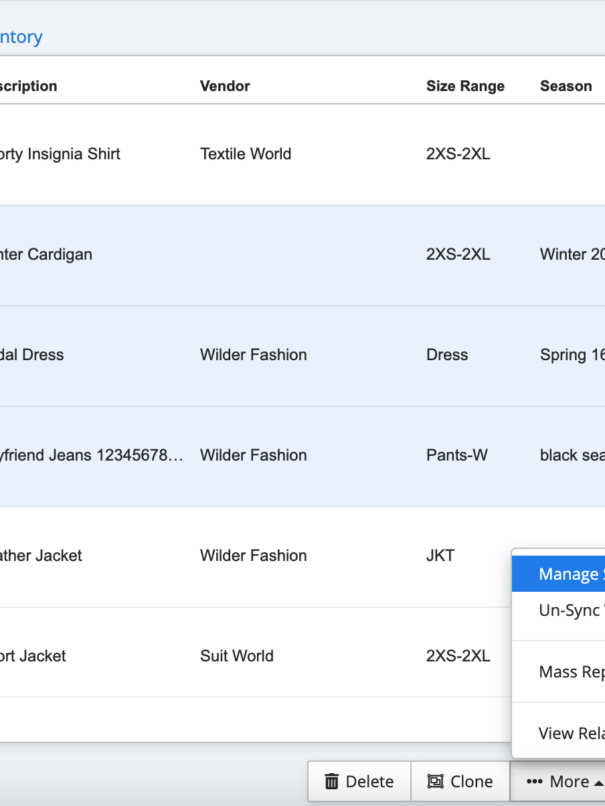Fast fashion may provide consumers with quick and easy access to an affordable, yet fashionable wardrobe, but the benefits come at a cost. “Fast fashion isn’t free,” says fashion journalist Lucy Siegle in an article for Vogue. “Someone somewhere is paying for it.”
The Landscape of the Modern Fashion Market
The demands of the fashion industry have been evolving over the past 20 years. This can be attributed to the consumer’s desire for affordable clothing at a lower cost or even cultural changes towards the attitudes of shopping in general. There are multiple factors that have contributed to the fashion evolution, some of which being:
- Needs for reducing the cost of production, labor, and products;
- An increased amount of customer expectations;
- Globalization;
- Technology.
Since the market is always evolving, it can result in common characteristics that may be found within the industry. A few of which are:
- The product often times has a short life-cycle. Meaning that the period in which it is considered viable for sale may be very short — sometimes within months, or even weeks;
- The selling seasons are often short as well. This refers to the fashion market’s constant need to refresh their product ranges to comply with the rest of the store’s merchandise season (how often the merchandise within the store is changed);
- Consumers possibly making high-impulse purchases;
- Tremendous product variety.
What is Fast Fashion?
“Fast fashion” is a method for making inexpensive apparel at a rapid pace in response to the latest style trends. With an increased demand for inexpensive clothing items at a quick rate, shopping has become a form of entertainment.
Shoppers visit outlets to be entertained. Retailers that provide a sense of atmosphere — usually done with proper displays, lighting, and even smells — provide their customers with a good customer journey. Going to a physical location, rather than shopping online, gives the customer the ultimate shopping experience, potentially leading them to make a purchase.
The Pros and Cons of Fast Fashion
Fast fashion has its benefits. However, just as with most things, there are also downsides.
Pros
The ability to meet market trends at a fast pace enables businesses to potentially become highly competitive and may provide consumers with desired goods faster than ever before. Other pros of fast fashion are:
- A drastic increase in the production of affordable clothing. This way consumers don’t have to wait around for what they want since there are so many retailers to shop from;
- People — particularly the youth and students — can still enjoy the thrill of shopping without having to spend a lot of money;
Cons
Although fast fashion is affordable, it has multiple downfalls. The reasons to rethink fast fashion consist of:
- The Exploitation of Workers Overseas: Due to their drive for low prices and quick access, fast fashion stores are often associated with subcontracting manufacturers in countries like Bangladesh and Myanmar. The manufacturers within these countries may consist of less-than-ideal working conditions, which can be why they’re often referred to as “sweatshops.”
- Environmentally Disastrous: The Huffington Post reported that the average American will throw out 81 pounds of clothing in a year. This totals up to about 26 billion pounds of textiles and clothing items in the landfill in a given year. Part of this may be caused by the mass production of clothing that is lead by the fast fashion industry. The issue not only resides with people throwing out their clothes, but it also is found with how the clothes are manufactured. Elizabeth Cline, author of Overdressed: The Shockingly High Cost of Cheap Fashion writes in her book that fiber production takes roughly 145 million tons of coal and between 1.5 and 2 trillion gallons of water.
- Fast Fashion Can Possibly Cost You More Than “Real” Clothing: Sure, buying fast fashion can be extremely affordable, but it’s important to think about the quality of the clothing that is being purchased. When a consumer purchases a shirt for $7 it may not hold up for long, so after a few wears, it gets thrown out. The consumer really liked that shirt, so they purchase it again and once more they end up throwing it out since the quality of the shirt didn’t hold. This happens a few more times throughout the year. They end up spending $35 for multiple tee shirts that end up getting thrown out when they could have just spent that same amount, one time, on a more high-quality shirt that would more than likely last longer.
Sustainable Fashion: A Response to Fast Fashion
Fast fashion has contributed to an increase in what critics often refer to as a throwaway culture. Throwaway culture is when consumers throw out goods, foods, and other products — rather than recycling or donating — after they’re perceived as useless or they no longer need it. “Buying clothing, and treating it as if it is disposable, is putting a huge added weight on the environment and is simply unsustainable,” says Cline.
Because of this, companies such as Everlane, ThredUp, and many more are exploring ways to solve the fast-fashion and throwaway culture crisis — which leads to the concept of sustainable fashion.
Sustainable fashion is clothing, shoes, and accessories that are manufactured, marketed and used as sustainably as possible, taking into account both environmental and socio-economic aspects. There are seven forms of sustainable fashion.
- On-Demand and Custom Made
- Green and Clean
- High Quality and Timeless Design
- Fair and Ethical
- Repair, Redesign, and Upcycle
- Rent, Lease, and Swap
- Secondhand and Vintage
How Retailers Are Responding to Consumer Concerns
Transparency is important because it is believed to be the first step towards transforming the fashion industry. Lack of transparency within the industry can make it difficult for companies to ensure their employee’s safety, working conditions are adequate, and that basic human rights are respected. When a company is completely transparent, they are making the public aware of who manufactures their brand’s clothes, who farmed the fabric (cotton, wool, etc), and under what conditions.
However, some businesses aren’t as transparent as they should be, despite knowing the cons of the fast-fashion industry. In fact, according to the 2019 Fashion Transparency Index, out of 200 brands that were reviewed:
- 72% of the brands publish policies on energy and carbon emissions at the company level;
- 37.5% disclose that they are involved in capacity-building projects in the supply chain focused on gender equality of female empowerment;
- 35% publish their supplier’s list.
On the other hand, some brands are becoming more transparent and are making more substantive organizational changes in order to reduce their impact on the environment. For example, as of December 2016, the following brands have published supply chain information on their branded products:
- Adidas;
- Columbia Sportswear;
- Disney;
- Fruit of the Loom;
- Gap Inc.;
- H&M Group;
- Levi Strauss;
- New Balance;
- Nike;
- Pacific Brands;
- Patagonia;
- Puma;
- Target USA;
- VF Corporation;
- Woolworths
Finding a Balance
It is difficult to monitor a supply chain if a company doesn’t even know where their manufacturing facilities are, which is one of the reasons why being transparent is important. Christina Hajagos-Clausen, garment director of IndustriALL Global Union says that “transparency of a company’s manufacturing supply chain better enables a company to identify and assess actual or potential adverse human rights impacts.”
Being able to embrace transparency while keeping aware of market trends may help a company be able to forecast consumer demands well ahead of time in order to produce desired goods in a sustainable fashion. This can be done with the help of order fulfillment software and apparel manufacturing software that helps improve on-time deliveries and customer satisfaction, as well as building in more granular visibility and control over the entire supply chain. Better tracking of both fashion trends and inventory at every stage means software allows retailers to reduce waste and source responsibly, potentially saving money as well as delivering more ethical or sustainable choices to consumers.







